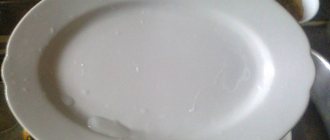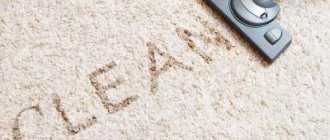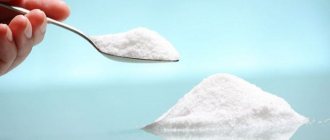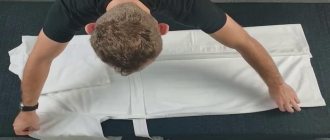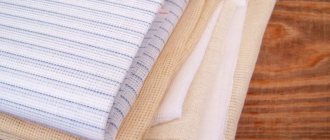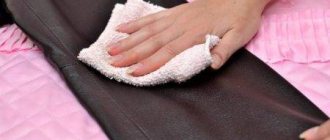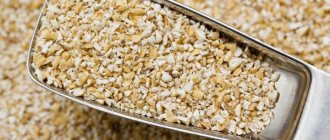Without exception, all employees of medical institutions, be they doctors, nurses or orderlies, must always look impeccable. This is especially true for their uniforms, because any dirt is always noticeable on the snow-white fabric. A physician who always takes care of his appearance will always have a warmer and more friendly attitude from patients. Many medical workers have known how to bleach a medical gown since college. Doing this at home is not that difficult if you know what to use and how to use it!
Whitening using improvised means
Worn medical uniforms often take on an unpleasant yellow or gray tint. As a rule, in such a situation, regular washing will not help. It is not difficult to bleach a gray medical gown after washing if you use special products. However, experts say, it is better to use bleaches that do not contain chlorine.
Unfortunately, not all remedies are equally effective. That is why, before purchasing them, you should consult with a specialist, carefully study the packaging, and choose a bleach that is suitable for the type of fabric from which the robe is made. If you don’t want to buy special products, but are still thinking about how to whiten a medical gown at home, you should know that this can be done using the simplest means at hand. We'll tell you about them right now.
Special means
In cases where traditional methods do not help, you can resort to traditional means. Some of them are relatively expensive, but quickly deal with stubborn stains. The most popular bleaches are:
- Persil;
- Amway;
- Perox;
- Vanish.
It is recommended to give preference to liquids and gels that contain hydrogen peroxide. The most contaminated areas (collar, pockets, sleeves) will still have to be washed by hand.
Ammonia and hydrogen peroxide
This is one of the simplest and most effective methods, known to almost every student of a medical college or university. How to bleach a medical gown using these components? You will need a small amount of ammonia and hydrogen peroxide. The latter in this combination acts as a bleach, and ammonia prevents the appearance of yellow spots on the fabric. In addition, it can soften tap water, facilitating the bleaching process. You need to take 10 liters of water, add ammonia (6 tablespoons) and peroxide (5 teaspoons) to them, and then simply place the robe in this solution for no more than two hours. If there are persistent stains on the robe, you can add a tablespoon of turpentine to the water.
Rules for washing terry products
Buying white coats
, the first question that arises in your head is how to wash it later, or even bleach it completely? So that you do not have to make special efforts when washing, do not wear the item until it becomes very dirty. Any stain can be washed off before it has set in.
If contamination cannot be avoided, washing should be carried out according to the following rules:
- sort white from colored and dark;
- If you have hard water, be sure to add a water softener when washing;
- when washing by hand, add vinegar to soften, proportion - 100 ml per 10 liters of water;
- set the washing machine mode indicated on the product label, and if there are no such instructions, do not wash the product at more than 60 degrees;
- It is advisable to use gels for washing, since powder particles are difficult to wash out of the fibers and make the product hard;
- For severe stains, use additional bleach.
Alcohol, powder and peroxide
When talking about how to bleach a medical gown at home, one cannot fail to mention the use of products such as hydrogen peroxide, washing powder and alcohol. This method is perfect for cleaning items made from synthetic fabrics. The most important thing is not to overexpose the robe in this solution, otherwise the uniform may suffer from the negative effects of chemicals. For 10 liters of warm water, the temperature of which should not exceed 40 °C, you will need four tablespoons of hydrogen peroxide, a tablespoon of ammonia, six tablespoons of ordinary table salt and 40 grams of washing powder.
Medical items should be loaded into this solution for about 20 minutes. After this, they should be rinsed thoroughly in cool water. If the soiling is too strong, you can wash the robe additionally.
General information
Almost every health worker notices that over time, their work clothes take on an overall grayish or yellowish tint. Such consequences are caused by hard water used for washing, incorrect selection of detergent, or insufficiently high temperature conditions set on the washing machine if the robe is made of natural materials. Synthetic white fabrics, on the other hand, take on a gray tint when washed at too high a temperature.
IMPORTANT:
The older the medical gown is, the more difficult it is to restore its original whiteness.
Let's reveal some of the most effective secrets on how to wash a white medical gown using the most affordable means.
- Ammonia + hydrogen peroxide
You need to take 3 tablespoons of hydrogen peroxide, 7 tablespoons of ammonia. Pour the solution with 10 liters of water. Soak the robe in bleach for several hours. The product is immersed in the prepared solution for 2.5-3 hours. Hydrogen peroxide works well to whiten whites. Ammonia can, firstly, soften washing water, and secondly, prevent the appearance of yellowness on the product.
- Vinegar
Vinegar has long been known and widely used for bleaching clothes. Vinegar is dripped onto problem areas on things and washed with washing powder.
IMPORTANT:
You should work with rubber gloves to protect the skin of your hands.
- Lemon juice
Freshly squeezed juice of 2 lemons is poured into 2 liters of water. The robe is soaked in this solution overnight. Rinse thoroughly in the morning. The method is effective for minor stains.
- Mustard powder
Mustard powder can whiten cotton fabrics. It must be thoroughly mixed in hot water. Soak the product in this solution for several hours, and then rinse vigorously in cold water so that no mustard particles remain.
- Laundry soap
Robes made from natural dense materials can be soaked in soapy water. Stains on a medical gown are heavily soaped with laundry soap. Place in warm water overnight. Then rinse thoroughly with the addition of conditioner.
- Soda
Thick natural fabrics can be washed well with baking soda.
To do this, pour soda into the washing powder compartment of the machine, set the temperature to 60-70 degrees and start the washing process. You can use soda in another way: you need to pour 6 tablespoons of soda into 5 liters of hot water.
A medical gown that needs bleaching is placed in this solution for 3 hours, and after this period is rinsed in cold water.
- Potassium permangantsovka
You will need a little potassium permanganate. It is more convenient to first dilute the grain separately in a glass of water, and then add it to a bowl with 10 liters of warm water and washing powder dissolved in it (about 100 g). The solution should be only slightly pink. The medical gown is soaked in it for a couple of hours and then rinsed thoroughly.
- Vodka with glycerin
You need to mix 750 ml of vodka, 300 ml of glycerin and 400 ml of warm water. Soak the textile item to bleach for 1 hour. Wash. Then rub the fabric with a piece of laundry soap and put it in polyethylene again for an hour. Wash the item again with a small amount of conditioner added.
- Turpentine
This product is suitable for bleaching cotton materials. It gives the medical gown a shiny snow-white appearance. The medical form should be washed first and soaked undried. For the solution you need to take 4 tablespoons of turpentine and 4 liters of warm water. After a few hours, the soaked medical gown is washed and rinsed again.
- Boric acid
Add 3 tablespoons of boric acid to 3 liters of water. Soak the mold in this solution for several hours, at least 3 hours. After the soaking procedure, wash and rinse the robe.
Lemon juice
How to bleach a white medical gown without boiling? Lemon will come to the rescue! This product - natural and affordable - will give a snow-white tone to any clothing. To prepare the solution you will need 10 liters of warm water and the juice of two medium lemons. Clothing should be left in the solution for a day, then rinsed thoroughly. Of course, this method will not be able to cope with old stubborn dirt.
How to remove a grease stain from clothes
Red wine stains can be easily removed with boiling water, but this method is not suitable for delicate materials. Stretch the contaminated cloth over a metal container (bucket, pan, basin) and pour boiling water over it until the stain completely disappears.
Wine stains can also be removed with table salt. True, this method will only be effective against fresh contaminants. Pour a couple of tablespoons of salt with a small amount of cold water, apply to a cloth and rub the problem area. If the stain has not completely disappeared, repeat the procedure. Then shake off the salt and wash the item in cold water, and then in warm water with powder.
- How to survive winter: 7 life hacks to lift your spirits during the dark season
Old wine stains from white fabric can be removed with citric acid. Take half a teaspoon of citric acid and 200 g of water, soak a cotton swab in the solution and treat the stain. Then rinse the fabric with warm water. Citric acid can be replaced with lemon juice.
Oil and fatty sauces can get on your favorite clothes and leave an unattractive stain at the most inopportune moment. How to quickly remove a grease stain from clothes? Here are 5 proven home recipes.
Laundry soap is usually found in every home. A simple block, familiar from childhood, removes greasy stains most effectively. Lather the contaminated area and leave overnight. Wash the item thoroughly in the morning.
Acetone is found in regular nail polish remover, so this substance is available to every woman. Some modern nail polish removers are made without acetone - read the label carefully. Apply the liquid to the stain from the edges to the center. Then cover with a paper towel and steam with a warm, but not hot, iron.
You probably know that ordinary table salt works well with oil stains. Sprinkle salt on the stained area and rub lightly. When the salt has completely absorbed the fat, shake it off and repeat the procedure. This should be done until the stain disappears completely.
This is a very logical method, because dishwashing detergents are designed to dissolve fat. You will need the product that you usually use to clean an oily pan (for example, Fairy or Pril). Squeeze the required amount onto the fabric and leave for a while. Then moisten the stain with boiling water and wash the item.
An unusual but effective way to defeat a greasy stain is to treat it with mustard powder. Pour a little mustard into a bowl, add water and stir until smooth. Then apply the mixture to the stain and leave for half an hour. Now wash your clothes with warm water.
Laundry soap
If you are thinking about how to whiten a medical gown that does not have heavy old stains, you can use regular laundry soap. The fabric should be rubbed with a soap bar and then immersed in a small amount of warm water and left overnight. If the robe is made of synthetic and delicate fabrics, laundry soap should not be used. The thing is that laundry soap is alkaline, which negatively affects fabric fibers. After soaking, the robe must be rinsed with conditioner or additionally machine washed on a suitable program.
Secrets of proper drying and ironing of medical gowns
After wet cleaning of the medical gown is completed, it must also be properly dried. For these purposes, it is worth using the most “banal” method - hanging a robe on the balcony.
An important rule is to ensure that your clothes do not dry out too much. Otherwise, subsequent ironing will be a real horror. If this happens, the clothes will have to be additionally sprayed with water before ironing.
It is important to set the correct temperature setting for the iron. You can learn about it from the label sewn to the collar of the robe. If there is no label on the clothing, you can heat the iron and touch the edge of the material to check.
Some medical organizations attach their logos to their workwear. If such a patch is present, then it is better to iron the item from the wrong side - to avoid the occurrence of “scorches”.
How do you like the article?
White
When talking about how to bleach a medical gown from gray and yellowness, one cannot help but recall such a remedy as whiteness or its analogues. True, they can only be used for cotton fabrics. Whiteness is not suitable for medical clothing, which consists of synthetics. The method of using whiteness is extremely simple: first of all, you need to soak the robe in regular hot water. After this, pour a small amount of bleach into the container and hold for 2-3 minutes. After this, all that remains is to take out the uniform and rinse thoroughly. Be careful: do not exceed the dosage of bleach, otherwise the clothes will quickly become unusable. Experts advise using whitening no more than once a month.
Review of the best household chemicals for whitening white clothes
In addition to folk remedies, special chemical agents are of course used to bleach medical gowns.
- Vanish
Vanish Oxi Action bleach can give items sparkling whiteness and maintain its original shade even in cold water. There is no chlorine in the liquid form of the product. Thanks to its delicate ingredients, it is suitable for working with silk or wool items.
- "White"
Bleach “Whiteness” ideally exhibits its properties with items made from cotton materials. Not suitable for boiling.
IMPORTANT:
“Whiteness” is a rather aggressive bleach; exceeding the dose or time of action of the substance can fatally damage the fabric. It is absolutely not suitable for synthetic fabrics due to the presence of bleach in the composition.
Clothes need to be soaked in hot water and “Whiteness” poured into it, strictly according to the proportions specified in the instructions. After a couple of minutes, the robe should be removed (preferably with rubber gloves) and rinsed as thoroughly as possible in another container with warm water.
- Persil
Persil is an oxygen bleach produced in powder form. This household chemical product contains more delicate components, but this makes its effectiveness not inferior to its analogues.
- Amway
The product has universal cleansing properties. It is poured into the machine drum during washing, or added to washing powder. If you have old stains that are difficult to remove, you can try boiling the item with Amway bleach.
- "Perox"
This oxygen-containing bleach actively cleans fabrics of any type, preserving their structure and original color. The gentleness and effectiveness of Perox, as well as the name itself, is explained by the inclusion of hydrogen peroxide in its composition.
Potassium permangantsovka
Are you thinking about how to whiten a medical gown? Pay attention to potassium permanganate. Using a weak solution will remove any stains from medical clothing. Please note: the water should have a light pink tint, all crystals should dissolve. The uniform should be soaked in potassium permanganate for no more than one and a half to two hours, then rinsed thoroughly in clean, cool water.
Soda Ash
Quite often this cleaning agent is used when cleaning an apartment, but it can also be used in laundry. So if you are thinking about how to whiten your white medical coat, you can use soda ash. Just like ammonia, it can soften hard water, making the washing process easier, and preserving the structure of things. Unlike many other home whitening products, using soda ash must be done in the washing machine. To do this, you need to pour a small amount of the substance into the washing powder compartment, put the clothes in the drum and wash them at a temperature of about 60-70 degrees. However, it is recommended to bleach only medical linen clothing in this way.
Store-bought bleaches
No less effective are the purchased products presented on the shelves with household chemicals. Products for bleaching clothes, oddly enough, are called bleaches.
It is worth noting! Bleach comes in chlorine and hydrogen peroxide based types. Chlorine bleach should not be used on synthetic materials, as chlorine will easily destroy them.
Use bleach in the washing machine as follows:
- Set the “Soak” and “Delicate Wash” modes.
- Load cleaning products into appropriate trays.
- Place the gowns in the drum.
- Start the washing machine.
- Activate the “Soak” and “Spin” functions.
- At the end of washing, hang the robes to dry.
In hand washing, bleach is used as follows:
- Dissolve the product in warm water.
- Soak the robe for 40-45 minutes.
- Wash by hand.
- Rinse thoroughly in cool water.
- Hang the robe to dry.
It is worth noting! There are oxygen-containing bleaches on sale, based on hydrogen peroxide, that can whiten a white medical gown without any extra effort. Among them, it is worth highlighting such brands as: “Ace”, “Vanish”, “Persil” and products from “Amway”.
Boric acid
This pharmaceutical product can be used not only for otitis media or eczema, but also for whitening medical uniforms. The recipe for use is quite simple: for two liters of warm water you will need two tablespoons of boric acid. It is recommended to keep clothes in this solution for 2 hours. After this, all that remains is to rinse the medical gown, then wash it in the usual way.
Difficult spots
Laundry soap
When washing and treating stains, it must be taken into account that work clothes contaminated with biohazardous substances should not be processed at home.
Such medical clothing requires professional treatment and disinfection. In some cases, gowns and medical suits are even disposed of after wear.
An effective washing and disinfectant "Glav Wash" allows you not only to wash blood, but also to neutralize viruses and bacteria, pathogens of acute respiratory viral infections, influenza and other diseases.
Washing in cold water will help quickly remove traces of blood. Hydrogen peroxide, which can be applied directly to the stain undiluted, is also effective.
Do not use warm or hot water for washing, as the stains will be absorbed even more and become persistent.
Ballpoint pen
To remove traces of ballpoint pen paste, you can use laundry soap. The affected area is soaped and rubbed. Most stain removers also cope with the problem if you use them right away, before the pen mark becomes old.
Another way is to use alcohol. Both ammonia and medical ammonia are suitable for these purposes. To remove the pen, the sponge is moistened with alcohol and applied to the stained area.
For better effect, the process is repeated several times. Complete stain removal with regular washing.
Ointment stains
Grease stains from greasy ointments are washed off with hot water and stain removers. Dishwashing detergent can be used as a quick response solution.
It is applied undiluted to the stain, rubbed, and left for a quarter of an hour. After this, the composition is washed off and the item is washed.
Zelenka
Green stains from white fabric of a robe can be washed using hydrogen peroxide.
Work order:
- the product is applied generously using cotton wool or a sponge;
- the stain disappears;
- the item is put aside for 10 minutes to allow the reaction to occur;
- the robe is washed.
If the robe is not white, but colored, you can remove the stain by first diluting peroxide in water. The soiled area is lightly wiped, after which the product is washed.
You should not keep peroxide, even diluted in water, on fabric with a tint for a long time - the treated area may become discolored.
There are several ways to remove iodine stains. One of them is based on soda and vinegar.
Stain removal procedure:
- Sprinkle baking soda on the stain.
- Pour a little vinegar on top.
- After the reaction of these two ingredients is over, the item is washed in the usual way.
Another method is to treat the stain with alcohol. For best results, it is advisable to hold a cotton swab soaked in alcohol on the fabric of the robe for a couple of minutes. After this, the item can be washed.
Mustard
The most common food mustard powder, which can be found in almost every kitchen, is actively used to whiten things. The rules for use are simple: you need to fill a basin with hot water and then dissolve three tablespoons of dry mustard in it. You should keep the medical gown in this composition for three hours, after which all that remains is to thoroughly wash or rinse the clothes. Please note: mustard will not remove heavy stains, but it can refresh a cotton medical uniform.
How not to ruin your robe
A medical white coat is a professional piece of clothing that is the uniform of doctors, pharmacists and students of specialized universities. The traditional uniform of clinic staff helps maintain the reputation of the staff.
The robe indicates that the specialist belongs to the hospital department and demonstrates his position. Proper cleaning of this product prevents the formation and transmission of germs. In the planned bleaching regime for doctors' uniforms at a medical institution, things go through the mandatory stages of collection, storage, transportation, washing, drying, ironing, repairing and recycling textiles.
A number of requirements that help clean and bleach gowns include disinfecting the material in the hospital building laundry.
Washing linen for medical institutions is regulated by sanitary standards and rules. Staff uniforms are sorted by fiber type, including worn fabrics, color and level of soiling.
To whiten the robe, items undergo aggressive disinfection and machine wash.
In order to bleach a medical uniform, you should follow certain rules:
- You should start washing after studying the composition of the material.
- It is prohibited to use products containing chlorine and laundry soap for synthetics.
- The use of boiling is highly discouraged. The permissible machine wash temperature is 50–60 degrees.
- Bleaching and washing a medical white coat with colored items can damage the fabric.
- Long-term stains are more difficult to bleach.
- You can use a chlorine detergent to bleach cotton and linen items. For other fabrics, bleach can be harmful.
- Medical clothing should be washed using fabric softener to soften the water and keep the gown fresh.
- A yellow discoloration remover should be selected with the “bleaching” label.
If you follow all the washing rules, you can easily bleach an old medical gown at home. To avoid rapid wear of the work uniform, stain removers should only be used as needed.
Article verified
by the editors
It is a well-known fact: frequent washing of clothes using various aggressive substances has a bad effect on the condition of the fabric. In order not to constantly bleach your robe, you should follow some simple rules for caring for light-colored items.
- A white robe should always be washed separately or with other white items.
- If it is necessary to wash a large amount of medical clothing at the same time, it should be divided by type of fabric (cotton, linen, synthetics).
- Chlorine-containing bleaches can only be used for washing cotton or linen items.
- Medical gowns should be washed at least once a week.
- When rinsing, it is a good idea to add conditioner to soften the water.
- If you use a washing machine, you need to clean its drain regularly. Otherwise, the drain will become clogged and things will remain dirty even after a thorough wash.
By following these simple recommendations, you can achieve impeccable whiteness in medical clothing in any situation.
Vinegar
If you are thinking about how to whiten your robe, vinegar essence or vinegar will come to the rescue. If you use essence, you will need 7 liters of water and 80 milliliters of essence. You need to soak things in this solution for 45 minutes, then rinse and wash thoroughly to get rid of the pungent odor. If you decide to use regular vinegar, you will need six liters of warm water and 275 milliliters of vinegar. Just as in the previous case, the medical form should be immersed in the solution for 45 minutes, and then rinsed and washed thoroughly.
How to dry and iron correctly
After washing, the robe is taken out into the fresh air. If this is not possible, the uniform is hung on hangers. The second option is suitable if it has been machine washed and the medical uniform is almost dry after squeezing. If the robe was soaked in vinegar essence, drying is carried out in the open air. The fabric must be exposed to fresh air. It is contraindicated to expose the robe to direct sunlight.
See also
The best ways to bleach tulle at home quickly and effectively
After washing, the uniform must be ironed to eliminate creases, bends and unevenness of the fabric. This is done with a regular iron on an ironing board. If there is no special device, a flat surface covered with a blanket will do.
To minimize exposure to hot steam, the robe is covered with a thin cloth. It can be replaced with a piece of gauze. The ironing mode is selected taking into account the type of fabric. For rough, the temperature is set to high so that all wrinkles can be smoothed out.
Keeping it white
You probably know that washing medical clothing too often with bleaching agents has a negative impact on the condition of the fabric. In order to keep your medical uniform in good condition for a long time, follow these simple rules:
- It is best to wash your medical gown daily, either by hand or in the washing machine.
- To begin with, the robe will need to be soaked with powder in hot water for half an hour, and then washed in the usual way.
- It is advisable to add disinfectants to the powder.
It is recommended to dry medical uniforms in the fresh air. Another option is to squeeze it until semi-dry, and then hang it on a hanger for several hours. When the form is dry, all that remains is to iron it. But you shouldn’t dry a medical gown on heating devices or hot radiators: this, of course, will dry out the fabric, but it will give it stiffness and, possibly, yellowness.
General recommendations for caring for medical uniforms
- Organic stains, such as blood, for example, are washed separately with soap by hand before the main wash. Blood stains are washed away only with cold water. Hot water will boil the blood and the stain will no longer come off.
- We must not forget that routine washing of a white medical gown in a washing machine should be done separately from colored items. It is also ideal to wash items of only one type of fabric together: linen with linen, synthetic with synthetics, cotton with cotton, since each type of material has its own suitable washing temperature.
- After the main wash procedure, it is better to rinse the item with conditioner to soften the fabric and protect the structure of its fibers.
- It is advisable to bleach a medical gown with a special product no more than once a week to protect the fabric from premature wear.
- It is ideal to dry clothes after washing in the fresh air, hung on hangers. Try to avoid direct access to sunlight.
- Dried robes must be ironed to give the product a “marketable” appearance and eliminate folds and creases. It is better to iron the item not directly, but through a thin damp cloth (chintz diaper or gauze, for example). It is important to monitor the ironing temperature setting. It must necessarily correspond to the type of material from which the medical uniform is made.
